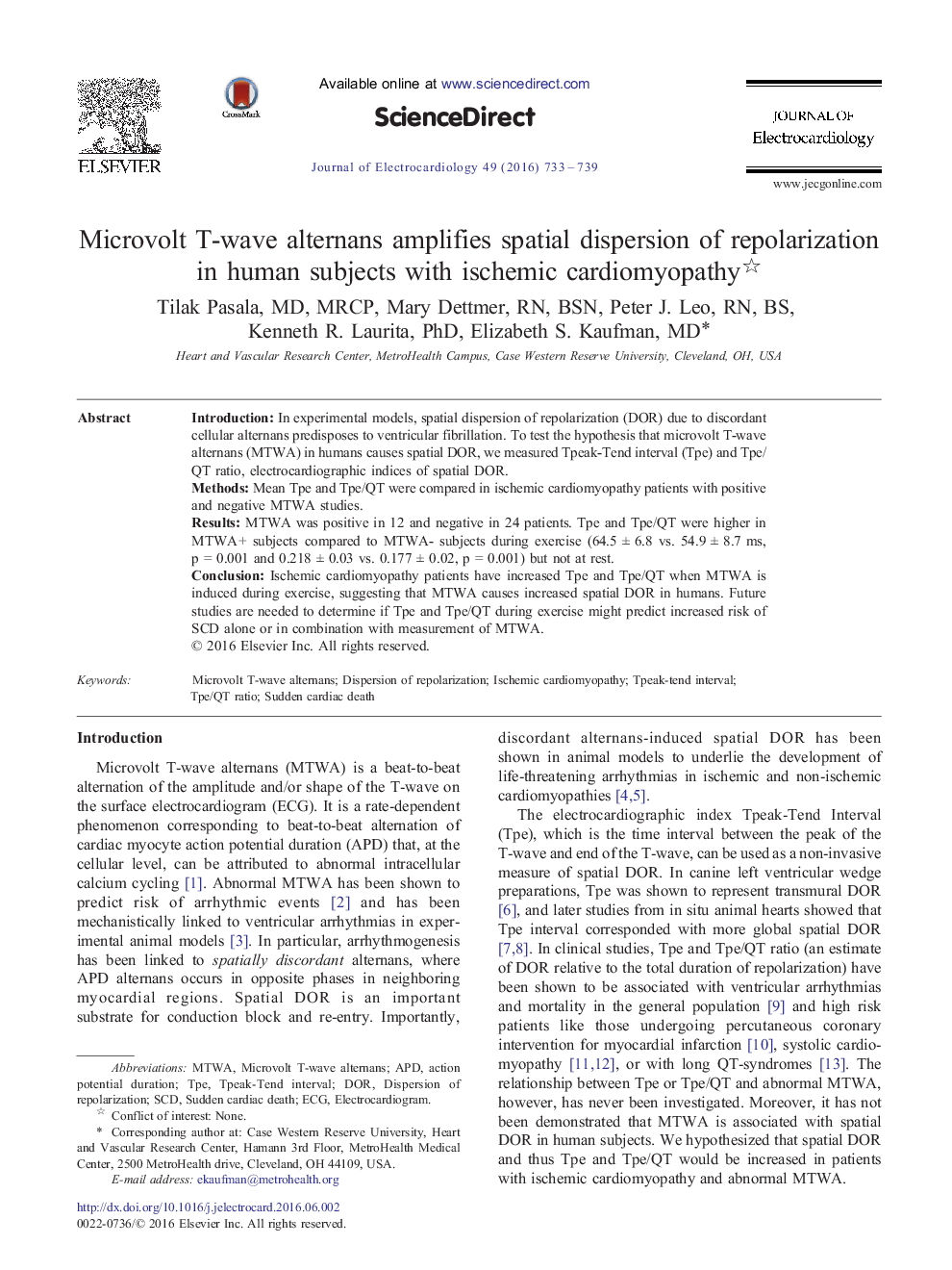| Article ID | Journal | Published Year | Pages | File Type |
|---|---|---|---|---|
| 2967313 | Journal of Electrocardiology | 2016 | 7 Pages |
•Patients who develop MTWA with exercise have increased Tpe and Tpe/QT.•Tpe and Tpe/QT are indices of spatial dispersion of repolarization.•MTWA causes amplified dispersion of repolarization in humans.•Calcium-mediated alternans likely underlies MTWA in this population.
IntroductionIn experimental models, spatial dispersion of repolarization (DOR) due to discordant cellular alternans predisposes to ventricular fibrillation. To test the hypothesis that microvolt T-wave alternans (MTWA) in humans causes spatial DOR, we measured Tpeak-Tend interval (Tpe) and Tpe/QT ratio, electrocardiographic indices of spatial DOR.MethodsMean Tpe and Tpe/QT were compared in ischemic cardiomyopathy patients with positive and negative MTWA studies.ResultsMTWA was positive in 12 and negative in 24 patients. Tpe and Tpe/QT were higher in MTWA + subjects compared to MTWA- subjects during exercise (64.5 ± 6.8 vs. 54.9 ± 8.7 ms, p = 0.001 and 0.218 ± 0.03 vs. 0.177 ± 0.02, p = 0.001) but not at rest.ConclusionIschemic cardiomyopathy patients have increased Tpe and Tpe/QT when MTWA is induced during exercise, suggesting that MTWA causes increased spatial DOR in humans. Future studies are needed to determine if Tpe and Tpe/QT during exercise might predict increased risk of SCD alone or in combination with measurement of MTWA.
